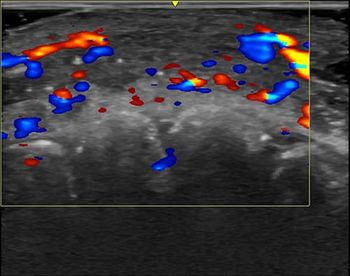
Pioneer looks to DVD for market-share growth
Pioneer looks to DVD for market-share growthStorage firm plans to bring DVD-R to PACS in 1999Although CD-R archives have attracted much interest in the PACS sector, the limited capacity of the storage medium has held it back from
Pioneer looks to DVD for market-share growth
Storage firm plans to bring DVD-R to PACS in 1999
Although CD-R archives have attracted much interest in the PACS sector, the limited capacity of the storage medium has held it back from large-scale implementations. With DVD-Recordable, however, end users could take advantage of the same write-once format used with CD-R and gain the benefits of employing a medium with seven times the capacity of CDs, according to executives at archiving firm Pioneer New Media Technologies.
The Long Beach, CA-based division of Pioneer Electronics is working to bring a DVD-R library to the medical imaging market, a sector it believes would benefit from the high capacity of DVD-R automated write/retrieval library systems.
"In a PACS environment with DVD-R, we can fit upwards of half a terabyte of storage in a 100-disk platter library jukebox," said Paul Meyhoefer, senior manager for mass storage at Pioneer New Media Technologies.
Pioneer sells its complete line of archive offerings through distributors, which, in turn, have signed agreements with companies such as Sterling Diagnostic Imaging of Greenville, SC, and Medweb of San Francisco. Sterling and Medweb, which have deployed Pioneer's CD-R products in the field, are working to configure their offerings to support reading and writing of DVD-R media, Meyhoefer said. Pioneer provides third-party vendors and systems integrators with developer toolkits and software to facilitate this process.
The first DVD-R libraries are expected to be installed in PACS environments by the second quarter of 1999, he said. While first-generation DVD-R drives have been tested for a DVD-R prototype, clinical sites will employ second-generation drives, which will be ready in the second quarter.
Pioneer is looking to sign on more companies for its DVD-R product. It is working with several other interested PACS firms. While other storage firms are also planning to offer DVD solutions soon (see story, page 4), Pioneer believes that its ability to provide both drives and robotics systems will ensure optimum performance and distinguish its product in the marketplace. Pioneer will be able to quickly upgrade its libraries as soon as new drive technology is available, he said.
The company plays an active role with the industry group DVD Forum and is the chair company of its Working Group 6, which is handling the standardization of DVD-R and DVD-Read/Write technology. Pioneer is also one of the founders of the DVD Forum.
Pioneer believes that DVD will catch on quickly in the PACS sector. It offers considerable advantages compared with competing media, such as magneto-optical disks, Meyhoefer said.
"The media and drive costs for MOD are expensive, and there's not a lot of opportunity for that cost to change," he said. "For instance, a 5.2-gigabyte MOD might be $135, whereas the initial cost of a 4.7-gigabyte DVD hard disk might be $45 to $50. As the rest of the CD-R manufacturers switch their lines over to DVD-R, the mass production of DVD-R disk titles should get that price down to the $10 to $15 range very quickly."
DVD-R drive technology should also soon decrease in price. The second generation of drives will run approximately $3000, a figure comparable with MOD technology, Meyhoefer said. The price will likely drop even lower, to below $1000, for the third generation of DVD-R drives, he said.
Search again Homepage
Newsletter
Stay at the forefront of radiology with the Diagnostic Imaging newsletter, delivering the latest news, clinical insights, and imaging advancements for today’s radiologists.




























